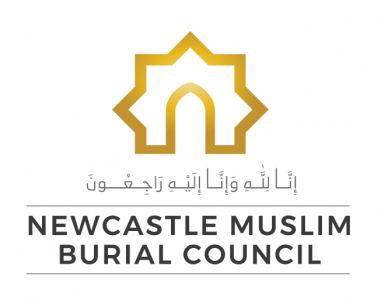Shariah requirements when someone dies
Final moments
When a person is on their death bed recite Surah Yaseen near the dying person.
The focus should be around bringing the dying person’s attention towards Allah ta'ala.
It is sunnah for the dying person to be made to lie on their right side facing the Qiblah (if practical and without causing difficulty).
Recite the shahadah
Those seated around the dying person should recite the kalimah shahada (ashadu an la ilaha illa illa-ilah, wa ashadu anna muhammadan rasul ullah) aloud as encouragement for them to also recite the kalimah; however, you should not instruct them to recite the kalimah.
Once they have recited the kalimah it is not necessary for those around them to prompt them to recite it again, as the purpose has been achieved; i.e. the last words uttered by the dying person should be the kalimah or any remembrance (dhikr) of Allah ta'ala.
Upon death
Recite ‘Inna lillahi wa inna ilaihi raje’oon’ - ‘Surely we belong to Allah and to Him we shall return’.
After the moment of death
After a person has died, gently straighten all their limbs.
This should be done by flexing the elbows, shoulders, hips and knees carefully and gently. If they will not straighten (i.e. due to a stroke, etc.) do not force them, as this could cause breakage.
Close the mouth by gently pressing the chin upwards while holding the top of the head. To hold it in this position, take a strip of cotton and place it under the chin and around the head, tying it firmly at the top.
Gently close their eyes.
Place the toes together and bind the large toes together with a cloth strip. If this is not possible then tie at the ankles carefully.
Remove any jewellery such as rings, necklaces, bracelets and nose studs. It is especially important to remove rings before swelling occurs.
Cover the deceased body with a clean (tahir) sheet.
Bathing (ghusl) and shrouding (kafn)
Arrangements should be made through your local masjid or the nearest available place with the required facilities. Inform them of whether the ghusl/kafn is for a male or female adult or child, to enable them to make the necessary arrangements. The masjid will facilitate the whole process and inform you as to what (if anything) you will be required to bring or do to enable the ghusl/kafn to take place in a smooth and required manner. This is an important Islamic ritual and as such all the Islamic principles must be adhered at all times.
Bathing
Bathing and shrouding the deceased is a communal obligation (fardh-e-kifaayah).
Only women should bathe females and men should bathe males.
It is preferable that close relatives bathe the deceased. If they are not present or unable to do so then any knowledgeable Muslim person should carry it out.
The person carrying out the bathing must be clean of impurities and preferably with ablution (wudhu).
It is disliked (makrooh) for a woman in the state of their period (haidh) or post-natal bleeding (nifas) to perform the bathing.
Shrouding
After the bathing is complete the deceased should be shrouded, preferably with white material.
It is sunnah to shroud a male in three cloths: (1) upper garment (qamees), (2) lower garment (izaar) and (3) overall sheet (lifaafah).
It is sunnah to enshroud a female in five cloths: (1) upper garment (qamees), (2) lower garment (izaar), (3) headband (aurni), (4) overall sheet (lifaafah) and (5) chest band (seenah–band).
Funeral prayer (janazah salah)
The funeral prayer (janazah salah) is a communal obligation (fardh-e-kifaayah).
The funeral prayer must be arranged quickly and the deceased should be buried in the nearest Muslim cemetery (or Muslim section).
It is highly disliked (makrooh-e-tahreemi) to perform the funeral prayer while the sun is rising, when it is passing the meridian (zawaal) or when it is setting.
The funeral prayer is a supplication to Allah ta'ala for the deceased.
The burial (dafn)
After the funeral prayer has been performed the deceased should be buried as soon as possible.Burying the deceased is a communal obligation (fardh-e-kifaayah).
The deceased should be carried and then placed at the Qiblah side of the grave.
It is desirable that mahram or close relatives of the deceased female enter the grave to lower the body.
It is desirable to hold a sheet above the grave while lowering and burying a female. If there is fear of her shroud opening, then it is obligatory (wajib) to do so.
Those that enter the grave to help lower the body should face the Qiblah.
It is sunnah to turn the body onto its right side, so that the entire body and face are towards Qiblah.
The strips of cloth tied at the head side, chest and leg side should now be untied.
It is desirable for those present to put soil back into the grave three times with a handful of soil.
The grave should be filled and raised above the ground and shaped like the hump of a camel.
It is advisable to remain behind for a little while after having buried the deceased.
One should engage oneself in the remembrance of Allah ta'ala and supplicate (make dua) for the forgiveness of the deceased and ask Allah ta'ala to make it easy for them to answer the questions in the grave.
